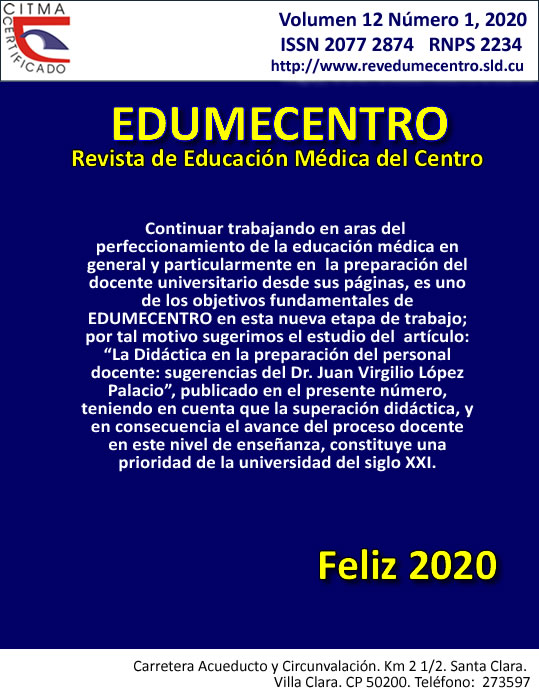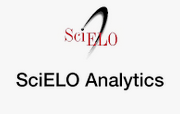Guide as a teaching aid to assess the general and craniofacial growth of the dental patient patient
Keywords:
students, dental, Orthodontics, human development, education, medicalAbstract
Background: the assessment of the growth and development of the dental patient allows unifying criteria and performing a homogeneous and efficient evaluation of their disease, by the future professional of Dentistry.
Objective: to design a guide to assess the general and craniofacial physical growth of the dental patient.
Methods: a descriptive and cross-sectional investigation was carried out at the Dentistry Faculty, from October 2017 to April 2018. Methods of the theoretical and empirical level were used: a survey in questionnaire form to students, nominal group technique and interview to key informants. The proposal was assessed by specialists’ criteria.
Results: there was a predominance of insufficient information on the subject under study by the students, which they indicated as ways to acquire knowledge: “by teachers in class” and “in outpatient care”, only a minority selected the basic textbook. The nominal group technique and interview to key informants allowed confirming what was investigated and identifying the theoretical aspects essential for the preparation of the guide to assess the general and craniofacial physical growth of the individual.
Conclusions: the proposal was a relevant, useful and feasible teaching aid to apply from the subject Orthodontics in the undergraduate and in the specialty, according to the assessment of the specialists consulted.
Downloads
Published
How to Cite
Issue
Section
License
Los autores que publican en esta revista están de acuerdo con los siguientes términos:- Los autores/as conservarán sus derechos de autor y ceden a la revista el derecho de primera publicación de su obra, el cuál estará simultáneamente sujeto a una Licencia Creative Commons Reconocimiento-NoComercial-CompartirIgual 4.0 Internacional (CC BY-NC-SA 4.0) que permite a terceros compartir la obra siempre que se indique su autor y su primera publicación esta revista.
- Los autores pueden establecer por separado acuerdos adicionales para la distribución no exclusiva de la versión de la obra publicada en la revista (por ejemplo, situarlo en un repositorio institucional o publicarlo en un libro), con un reconocimiento de su publicación inicial en esta revista.
- Se permite y se anima a los autores a difundir sus trabajos electrónicamente (por ejemplo, en repositorios institucionales o en su propio sitio web) antes y durante el proceso de envío, ya que puede dar lugar a intercambios productivos, así como a una citación más temprana y mayor de los trabajos publicados (Véase The Effect of Open Access) (en inglés).










